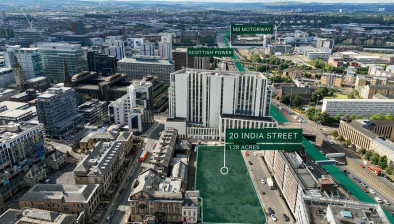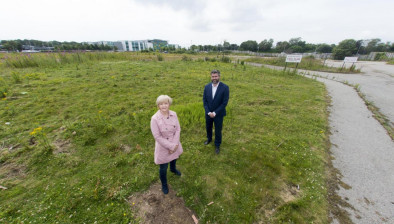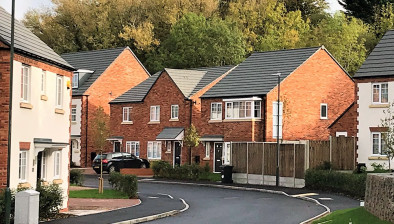Student accommodation rents ‘continue to soar’

Chris Dougray
Students in Glasgow could be faced with paying close to £5,000 more for accommodation than their counterparts in Aberdeen in the next academic year, according to new data from real estate advisor CBRE.
CBRE analysed the Purpose-Built Student Accommodation Sector (PBSA) in the UK’s 30 major university towns and found that rents in Scotland’s two biggest cities are to rise significantly in the 2024/2025 academic year.
Glasgow students are facing an 18% hike on average for an ensuite room - from £200 to £235 a week. A student renting an ensuite room for 51 weeks in Glasgow would pay an average of £11,985. This leaves no money for food and other essentials, even for a student on the maximum loan and bursary package available in Scotland, which is set to rise to £11,400 for 2024/2025. Average studio room rents are predicted to rise by 25% from £235 to £294 – totalling £14,994.
In Edinburgh, an en-suite room or cluster room currently averages £199 a week, a figure expected to rise 8% to £214 in the new academic year, while average rents for a studio will increase 7% from £285 to £304. A student renting would pay £10,914 for a cluster room or £15,504 if they were renting a studio.
However, it is a very different picture for Aberdeen, with the average rent for a room in a shared flat remaining stable at £138 per week. This equates to £7038, leaving £4,362 to live on, making it a much more affordable alternative than Edinburgh or Glasgow. Studios, however, are expected to jump 13% from £183 to £206.
Dundee however is reversing the Scottish trend with an 8% drop in the cost of renting an ensuite room from £172 to £159 a week. A studio costs £238 a week, up 6% on the previous year.
Constrained supply and a fall in the delivery of student beds to the market have exacerbated rental growth across the UK. CBRE has predicted that by 2028, the market could face a potential shortfall of 620,000 student beds relative to the 36,000 beds currently identified as being delivered in that period (assuming the student population grows by 1% per annum for the next three years).
Chris Dougray, executive director of CBRE in Scotland, said: “There is a notable difference between how much it costs for a student to live in Aberdeen and Dundee, compared to Glasgow and Edinburgh and that will undoubtedly have to be factored in when school leavers and mature learners are considering where to study.
“The upcoming spike in accommodation costs, particularly in Glasgow, is concerning and the shortage of available PBSA in the city means higher rents are inevitable because there are so few vacancies.
“It’s estimated that there is a shortfall of 22,000 student beds in Scotland’s largest city alone. Although there are plans for a number of new developments in the pipeline, for example at Collegelands near Strathclyde University, there is a long way to go before demand is met.
“With the rent rises for the next academic year coming, some students may have to move out of accommodation mid-degree and move back home if they can as they can’t make ends meet even with part-time jobs to pay for the other essentials such as food, travel and clothing.”
Tim Pankhurst, head of student accommodation valuation at CBRE, said the decrease in student accommodation supply and growing rental prices could soon encourage economic migration of university undergraduates in the UK.
“Historically London has been the only UK city where the affordability of student rents hasn’t aligned with the available maintenance loan. However, we’re now seeing this same trend play out across our key regional university towns. As maintenance loan growth lags and the cost of attending university grows, we could see a shift in where they choose to go. More than ever, the cost of living is becoming a key decision driver for domestic students when deciding where to apply to study.”
According to CBRE research, the sale of buy-to-let homes has contributed to an estimated loss of approximately 10% of the UK’s private rented stock since 2016, impacting the largest accommodation pool for students.
Meanwhile, only 9,000 new bedspaces were delivered to the PBSA market last year, which has become core to the provision of accommodation in university towns. Only 14,000 bedspaces are projected for this year. This figure is significantly lower than the historic average of 30,000 new bedspaces delivered per year. Planning conditions, elevated construction costs, and the rising cost of debt have all influenced the supply pipeline and development viability in the sector and the shortfall in beds is increasing.
However, CBRE’s data shows there is still ample interest in the sector from institutional investors, which can be leveraged to increase the supply of beds. Just under £4 billion worth of investment deals took place in 2023 alone. Universities are increasingly looking to the private sector for the development of PBSA, as budgets become further constrained.
Oli Buckland, head of PBSA investment at CBRE said: “With conditions predicted to become more viable in 2024 and the current scarcity of quality-built stock, institutional investors will return to forward fund new developments. Leveraging this investment capital would make it possible to address the chronic shortage of student accommodation our University sector is facing, which will only intensify in the next five to 10 years.”








